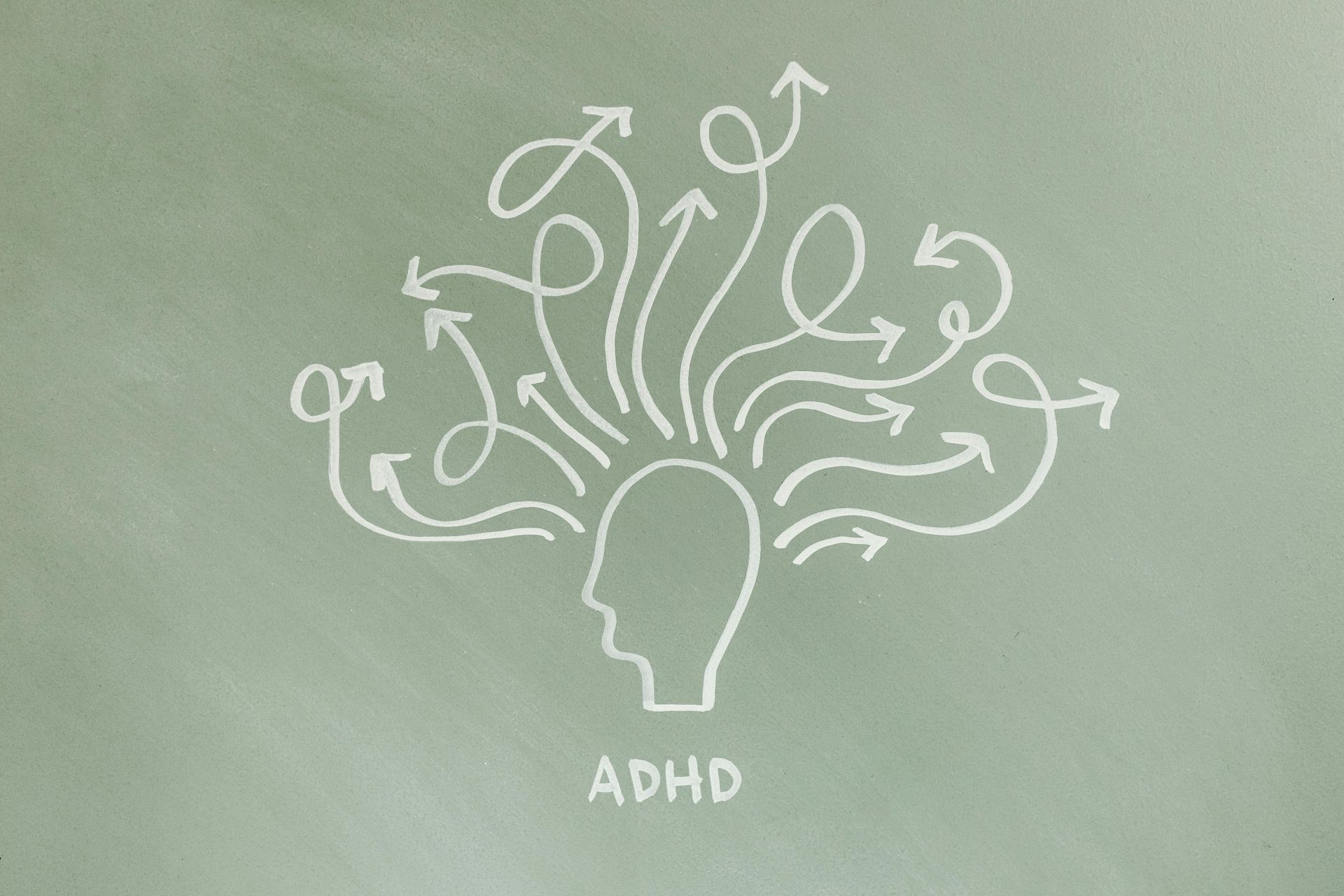Self-Assessments for Neurodivergence: ADHD, Autism & More
DISCLAIMER: The list below are ALL self-assessment tools to increase awareness and improve ones understanding of self. None of the results on these tools indicate a diagnosis. Only a trained professional can provide official diagnoses.
Quick ADHD Screeners:
1. Adult ADHD Self-Report Scale (ASRS-v1.1) or (ASRS-5)
Purpose: Screens for adult ADHD symptoms.
Details:
ASRS-v1.1: 18 items
ASRS-5 is a 6 question self-assessment tool for ADHD
Why it's helpful: Short, evidence-based, easy to score and share results
Critiques of this tool:
Since you’re reporting your own symptoms, it’s easy to over- or understate them. Trauma can also cause symptoms similar to ADHD, which might make the test suggest ADHD when it’s really something else.
The test focuses on attention and hyperactivity but doesn’t cover all areas of thinking and planning difficulties that can come with ADHD.
The test was mainly designed for Western populations, so some questions might not fit or feel relevant for people from other cultural backgrounds
2. Wender Utah Rating Scale (WURS-25 ) or (WURS-61)
Purpose: Screens for adult ADHD in retrospective form—reflecting childhood symptoms.
Details:
WURS-25 (abbreviated) version is a 25 question screener focusing on symptoms experienced earlier in life.
WURS-61 (longer) version is a 61 question screener focusing on symptoms experienced earlier in life.
You rate each question on a scale from 0 to 4, and a total score of 36 or higher usually does a good job (about 96% of the time) of indicating ADHD in adults.
Why it's helpful: It helps you see patterns in your behavior over your whole life and adds extra insight to current symptoms.
Critiques of this tool:
The test asks you to remember how you acted as a child, which can be hard or unclear—especially if you’ve experienced trauma or have memory difficulties.
Some signs of childhood trauma, like being restless, irritable, or having big mood swings, can make the test score higher than it should, which might be misleading. .
The test was mainly studied with typical ADHD groups, so it might miss ADHD in women or people who hide their traits.
Autism Trait Detection:
1. Autism-Spectrum Quotient (AQ)
Purpose: Self-assesses autistic traits in adults (and adolescents/children via adapted versions).
Details:
50 forced-choice questions covering areas like social skills, attention to detail, communication, imagination, and flexibility.
Score of 32+ often correlates with autistic traits; however, not diagnostic and professional follow-up should be considered.
Why it's helpful: Quick, familiar, and widely used in research and practice.
Critique of this tool:
The yes/no style of the questions can make things feel too simple, and people who hide or mask their traits might not get an accurate score.
Sensitivity issues: Adults who were diagnosed later in life or who manage daily life well may get lower scores, even if they have many autistic traits.
Not diagnostic: The test can’t tell the difference between autism and things like social anxiety, trauma effects, or other neurodivergent traits
2. Ritvo Autism & Asperger Diagnostic Scale (RAADS-R / RAADS-14)
Purpose: More comprehensive autism screening in adults; helps catch people who “escape” typical diagnoses.
Details:
The RAADS‑R has 80 questions that help you learn more about possible autism traits.
The shorter RAADS‑14 is good at spotting traits, but it can sometimes suggest autism when it’s actually something else, so it’s best used alongside other assessments
Why it's helpful: This test goes deeper than shorter quizzes, recognizing people who hide traits or were diagnosed later in life. It looks at how people feel and experience things on the inside, not just what others can see..
Critiques of this tool:
Length: RAADS‑R (80 items) may be overwhelming for some folx, particularly those with executive functioning difficulties or ADHD.
False positives: The test is good at spotting traits, but sometimes it may highlight people who have social anxiety, trauma, or ADHD instead of autism.
Complex scoring: The results aren’t straightforward—you usually need a professional to help understand what your answers mean.
Masking Behaviors/Traits
Camouflaging Autistic Traits Questionnaire (CAT-Q)
Purpose: Measures social masking behaviors—compensation, masking, assimilation—common in autistic adults.
Details:
25 self-report items using a 7-point agreement scale.
This questionnaire is reliable and consistent—people tend to get similar results each time they take it, and the questions work well together to measure the same idea.
Why it's helpful: Fills a major gap—acknowledges the emotional burden of social masking.
- Critiques of this tool:
Limited clinical adoption: Still newer in research; not universally recognized in clinical assessment.
Self-awareness dependency: It asks people to think about how much they hide or change parts of themselves around others, which can be hard to notice or describe accurately.
Score interpretation: There isn’t a set score that means ‘yes’ or ‘no’—your results just show patterns or tendencies, not a medical diagnosis
If you have taken any or all of these assessments, are located in the state of South Carolina, and decide that you would like to book a consultation to see how I can support you, reach out today!